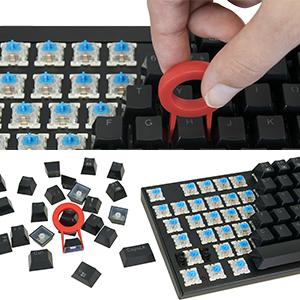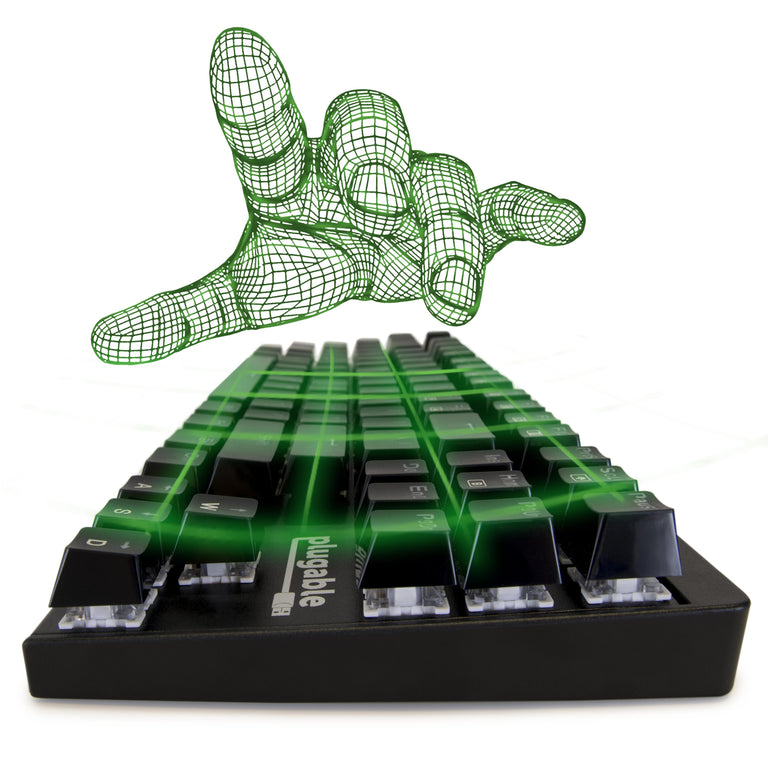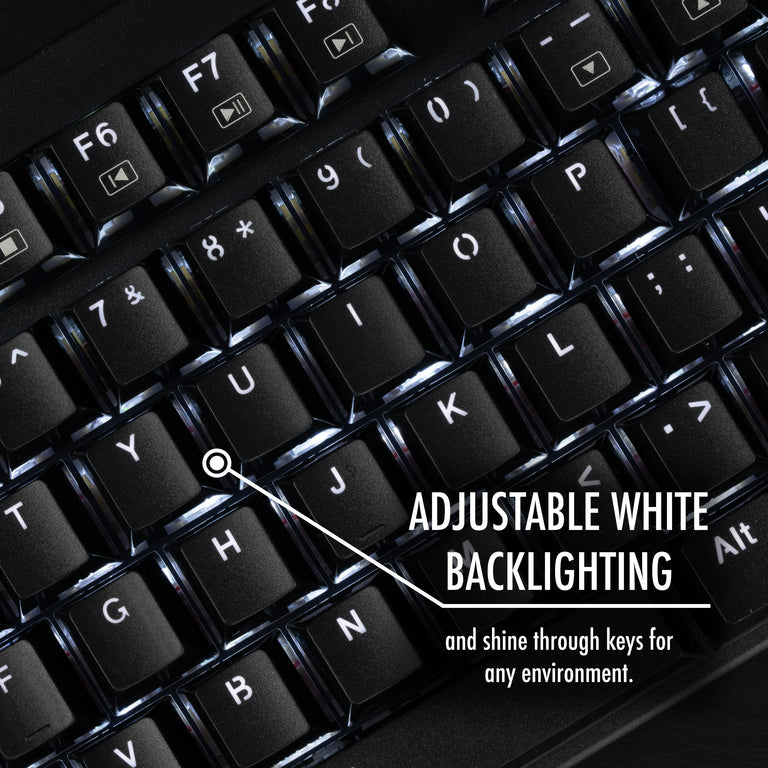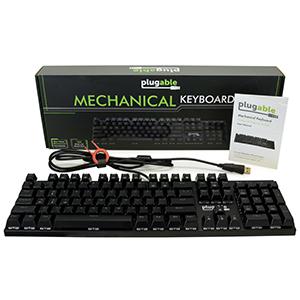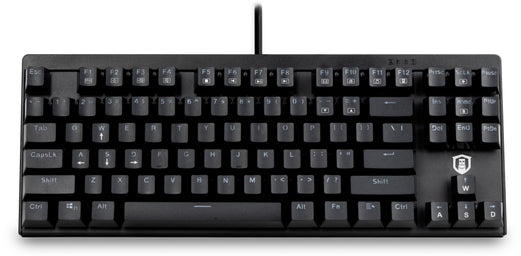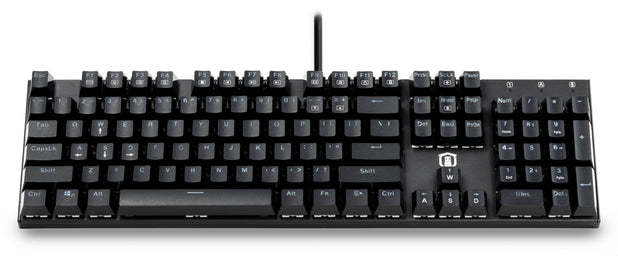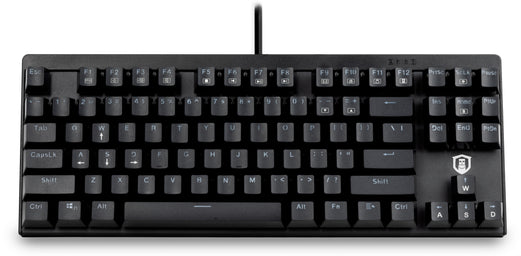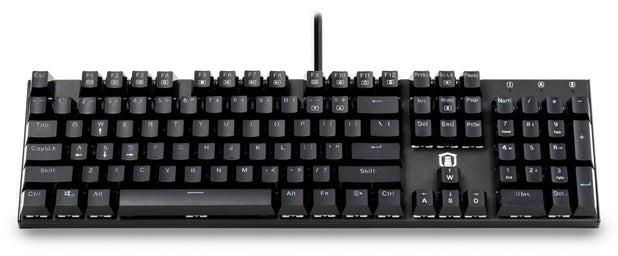
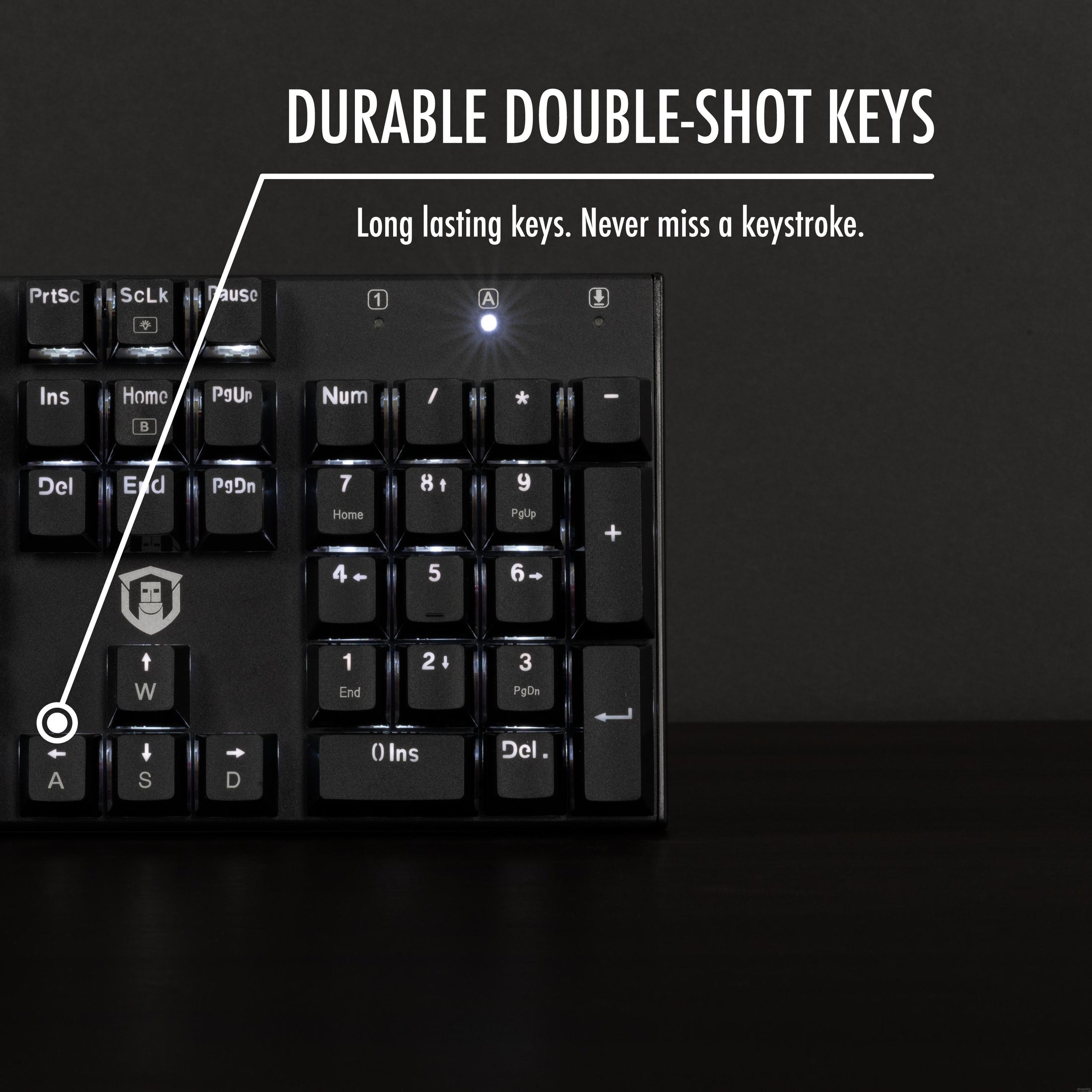
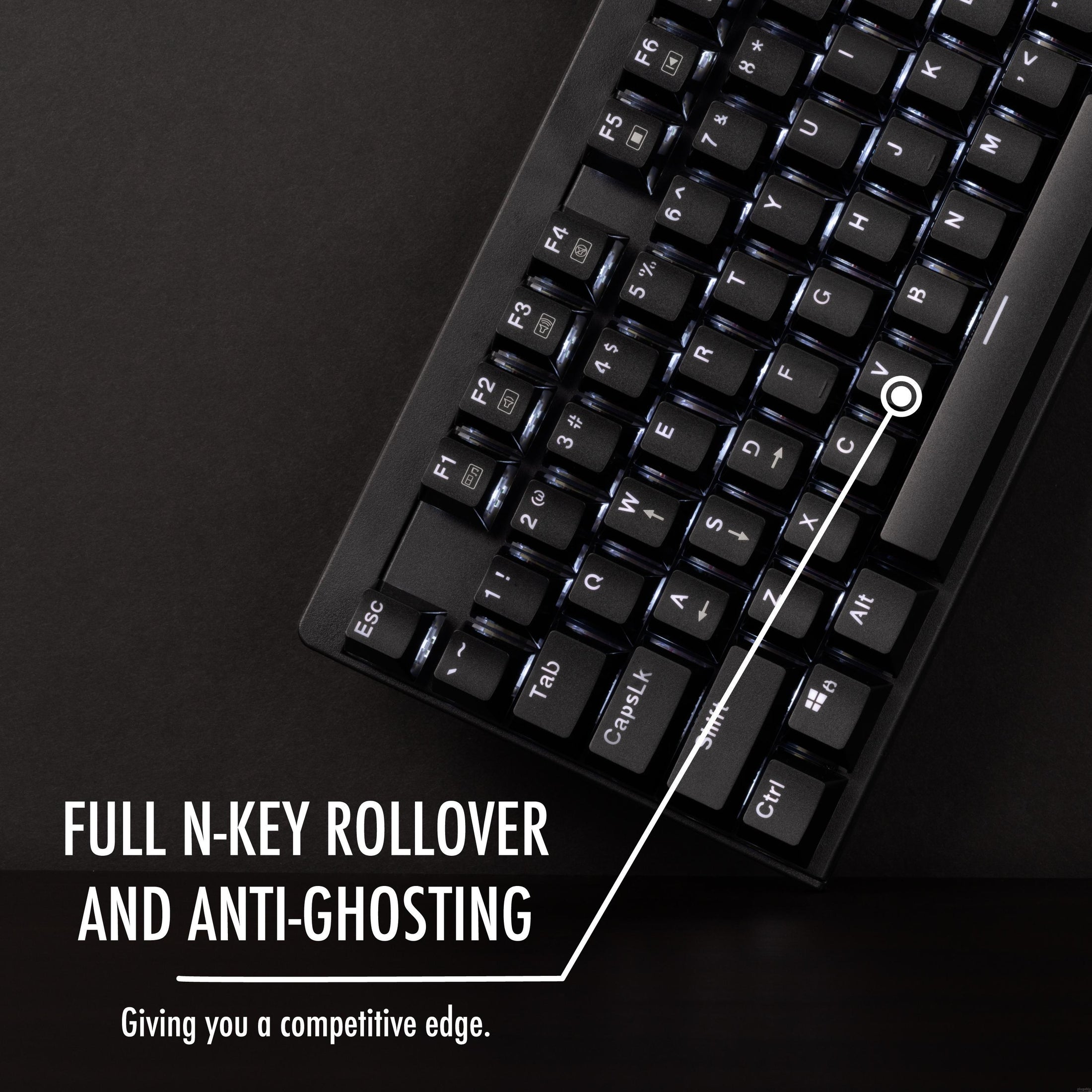
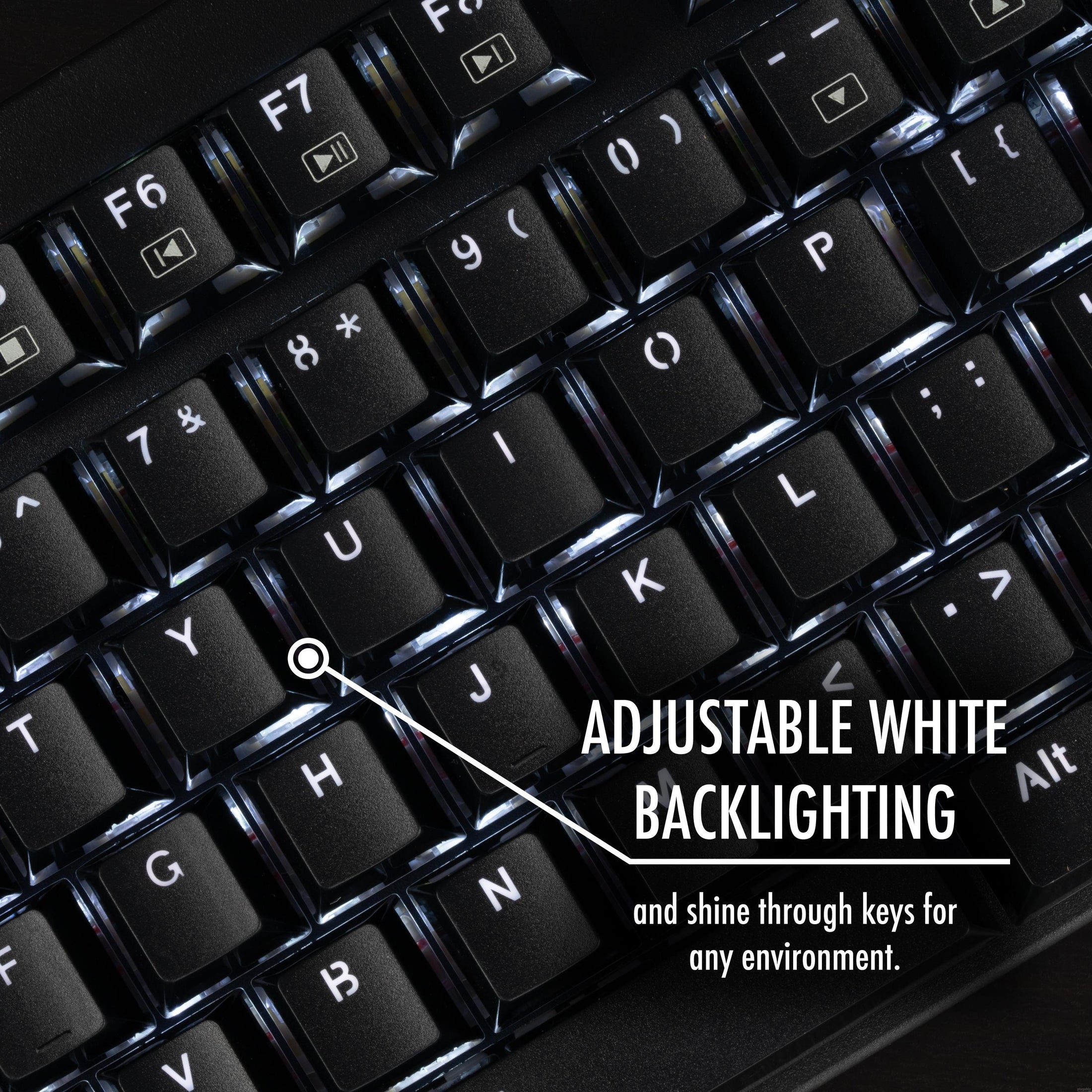
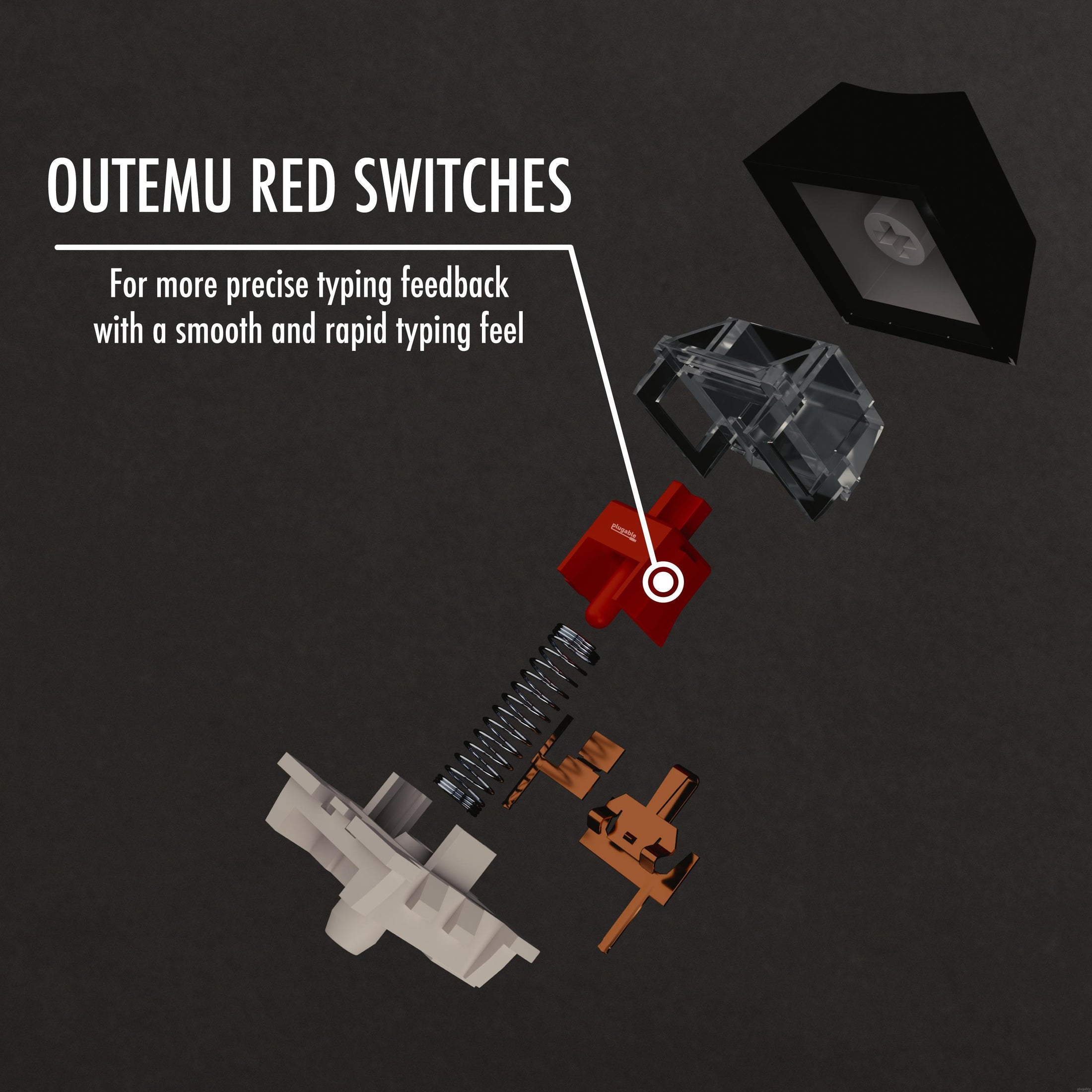
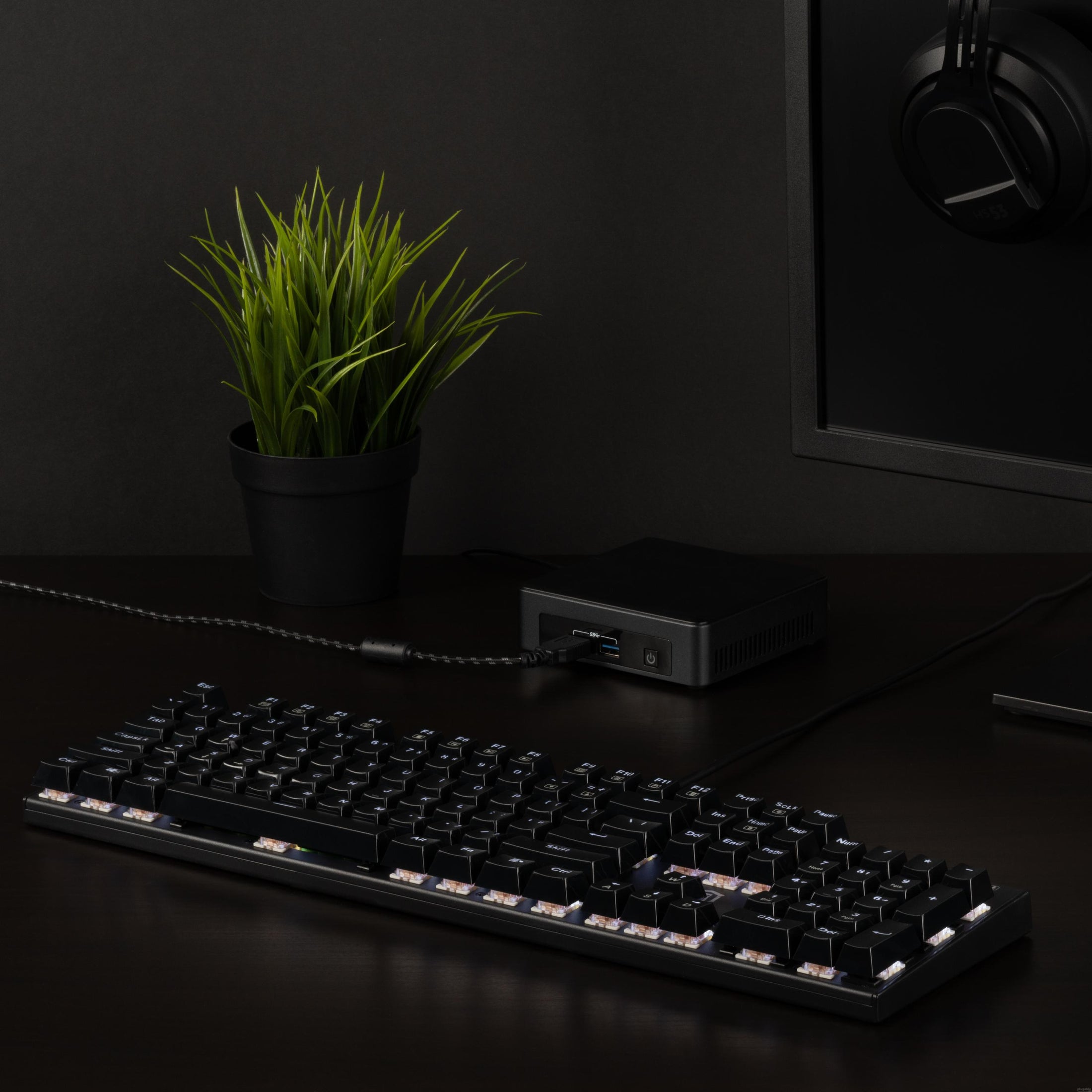
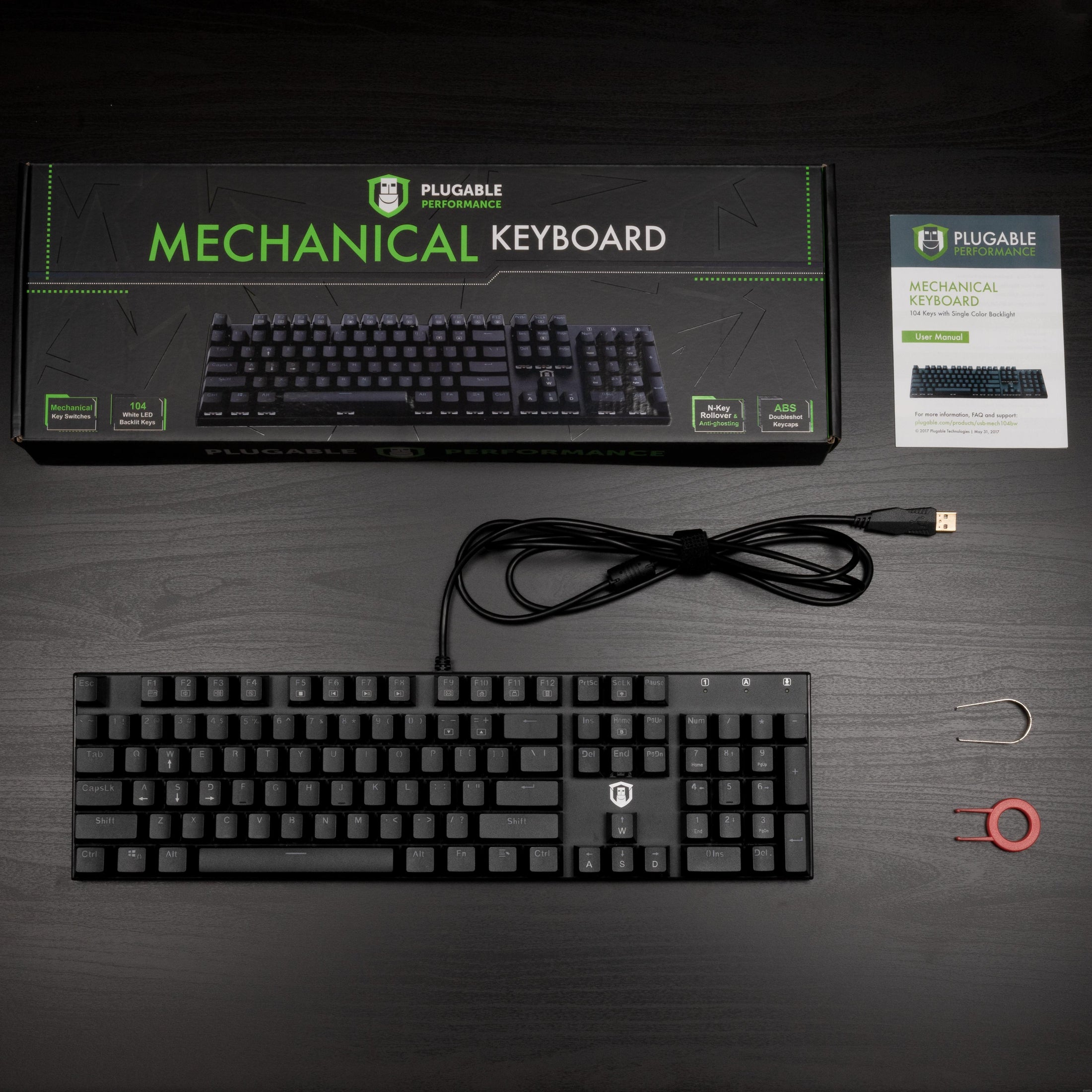







Hassle free, 2-Year Warranty
Fast, Free Shipping on Orders $35+
Lifetime Technical Support
30-Day Money Back Guarantee
Plugable Compact 104-Key Mechanical Keyboard With Red-Style Switches
$59.95 USD
SKU: USB-MECH104RWAmazon Rating : (30 Reviews)
Features
- Red Mechanical Switches— Full-size 104-key mechanical keyboard provides smooth and lightweight linear action. Designed as a gaming keyboard, but great as an office keyboard too with no tactile "bump" or "clicky" sounds when pressed. Outemu switches are rated for 50 million actuations. 60±15 grams actuation force with 4.0±0.2mm of keystroke travel.
- Plug and Play— Compatable with Windows, Mac and Linux devices. Driver and software free for a fully plug-and-play experience
- Ergonomic Layout— Keycaps are ergonomically sculpted and individually lit for ease of use even in the darkest environments
- Durable Build— Robust frameless build features a steel backplate and doubleshot injection ABS keycaps. This rugged design reduces flexing and common wear that shortens the lifespan of other keyboards
- 2 Year Warranty— We love our Plugable products, and hope you will too. All of our products are backed with a 2-year limited parts and labor warranty as well as Seattle-based email support
This product is discontinued.

